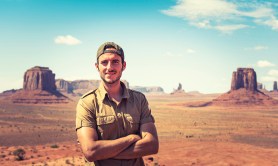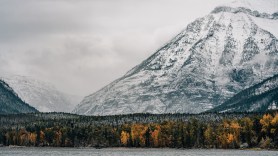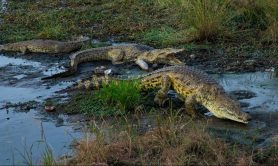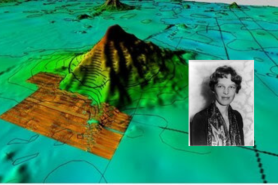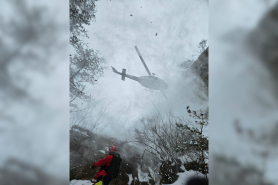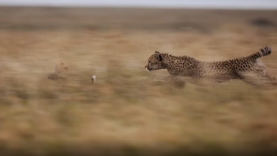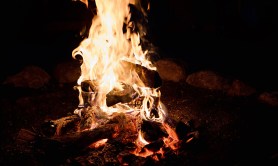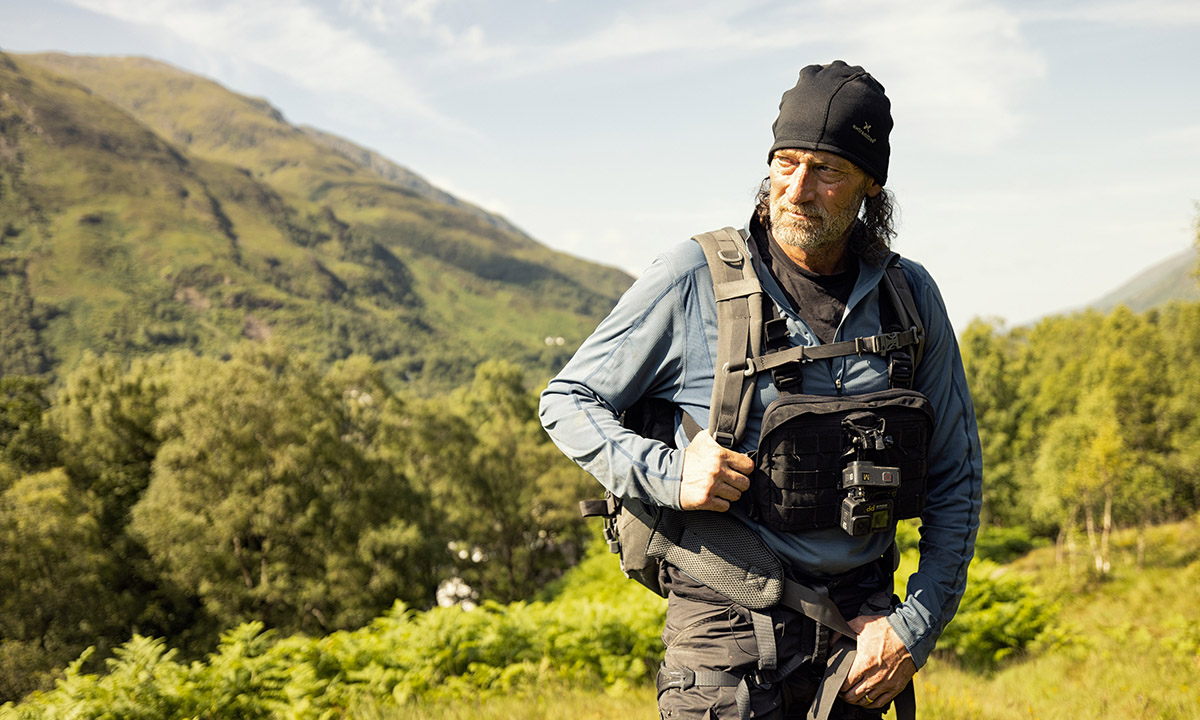

Troy Kotsur is ready for Bear Grylls to teach him what it takes to face off with nature as the two embark on an adventure in the Scottish Highlands on this week’s Running Wild with Bear Grylls: The Challenge (Sundays on National Geographic at 9/8c). Both Troy, the first deaf man in history to win an Academy Award, and Bear, a veteran survivalist, must learn how to communicate with each other during their time together.
Videos by Outdoors with Bear Grylls
“Taking a guest into the wild that can’t hear is a first for me, and it’s going to be challenging for both of us,” Bear says as he helicopters to meet the Coda star.
Troy, using sign language, likens the experience to his early days in acting. “I really struggled in show business, and it really felt like I had to survive,” he explains. “I really have to remember what it’s like to go through a tough experience again. And maybe that’s why I’m here.”
Troy admits he’s curious how he and Bear are going to communicate and get along while out in the wild. “We’ll have to see what happens,” the actor signs, joking he’ll make their interpreter face the challenges first to “see if he survives” and then follow behind.
After Bear meets Troy, they travel to one of the highest peaks in Scotland. On day one, they must establish a way to communicate and descend over 2,500 feet across 8 miles of steep terrain filled with sheer cliffs and crisscrossed with freezing rivers. On day two, Troy must head off on his own in similar terrain to earn his extraction from the wilderness.
Day One: Communication Is Key
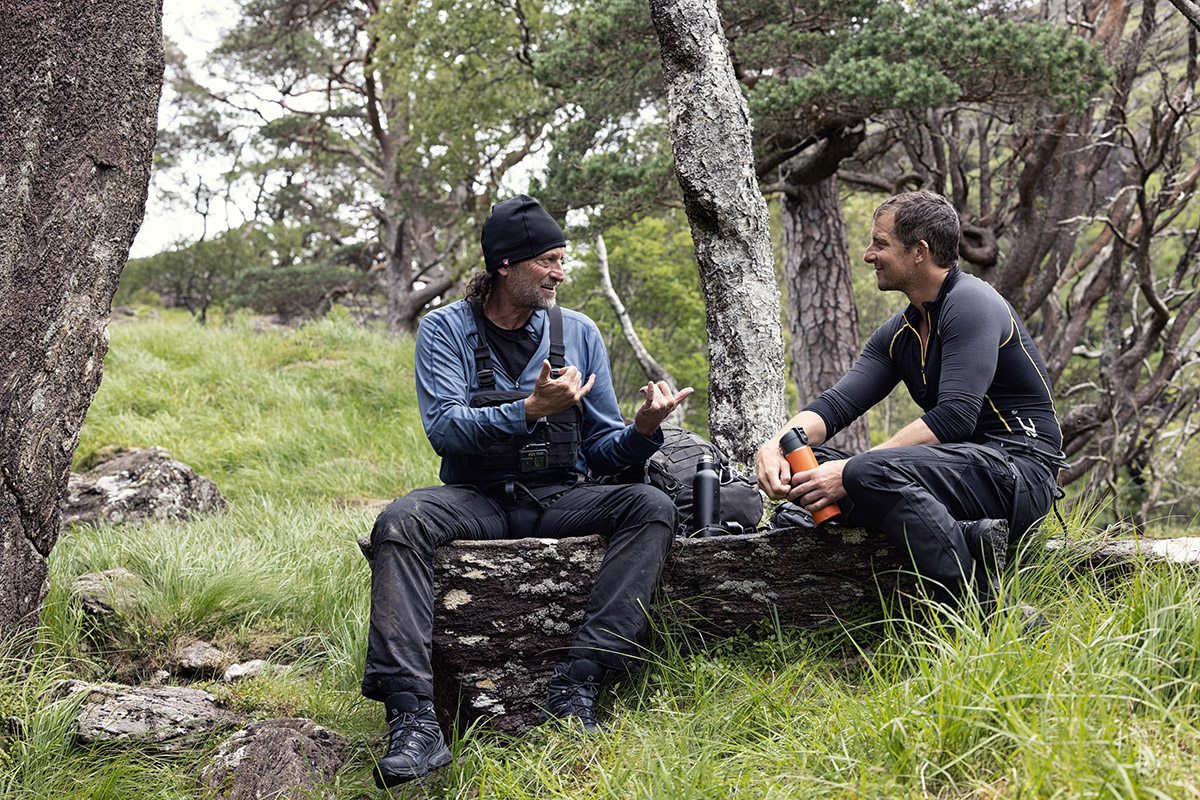
Bear and Troy are high up in the lush peaks and ready to get started. “I’ve spent a lot of my life in these mountains, and one thing I’ve learned is never take them for granted,” Bear says.
He notes communication is key in the wild, and he and Troy decide to use a short rope to attach themselves together so they can get each other’s attention by putting tension on it when necessary. “Troy is actually an incredible communicator, just at the moment it’s a different language,” Bear says. “But I’ve learned nothing is insurmountable, if the will is there. I reckon we’ve got this.”
The pair almost immediately face slippery rocks flanking mountain streams, so they put socks over their boots to give them extra grip. Then, using the rope buddy system, Bear and Troy slowly make their way down grassy slopes until they come to a 200-foot high wet and dangerous cliff. The first skill Bear must teach his survivalist student is a mountaineer’s rappel. He secures a rope to a tree and shows Troy how to “trust the rope” while warning to never let his brake hand go slack on it. Once Troy goes over the cliff’s edge, Bear won’t be able to see or communicate with him. Compounding the challenge, Troy’s interpreter can’t accompany him down. Bear admits, “I’ve never faced a situation quite like this.”
Troy descends the sheer rock cliff alongside a cascading waterfall and indicates to Bear above that he’s safely at the bottom by giving three strong tugs on the rope. The Mandalorian actor confesses rappelling down the cliff was “quite a challenge.” He adds, “I lost my balance several times, but I had to make adjustments and really communicate with my own body and with the rope and really have that trust.”
Next, the two plan to continue to head down the mountain by following a raging river, since it’s the only way they can make their way through the rough terrain. “I don’t want to think about exhaustion right now,” Troy signs. “I’m looking forward to making it through the day.”
Bear teaches Troy how to do a South African rappel to get down a shorter 35-foot descent to the river’s edge. This rappel relies on using the rope’s tension on the body instead of harnesses and gear to lower a climber down. The more dangerous technique on less steep inclines is what Bear calls “a broken-leg drop”—an improvement over a higher “death drop.”
Unlike when Troy appears on stage, he has no interest in breaking a leg here in Scotland. “Pray for me,” he jokes before successfully guiding himself to the bottom.
The day’s final challenge remains: Navigating a river to find a suitable location to make camp for the night. “I reckon the most testing part is ahead,” Bear contemplates, knowing the pair will have to plunge into the cold rushing river and float downstream. The two must be especially cautious, since Troy won’t be able to hear any instructions Bear might need to give him.
They drop down waterfalls and are carried through raging white rapids but manage to make it through without any major problems. “There was such a strong current behind me,” Troy signs. “You’re in that washing machine and you have no control . . . what a wild ride and a wild river.”
It’s now time to get dry and warm, so the two set up camp. After Bear treats Troy to a true Scottish meal of haggis, in this case made with the internal organs from a deer, they turn in for the night. “I really miss pizza,” the actor laments after a bite of testicle.
Day Two: Overcoming Obstacles
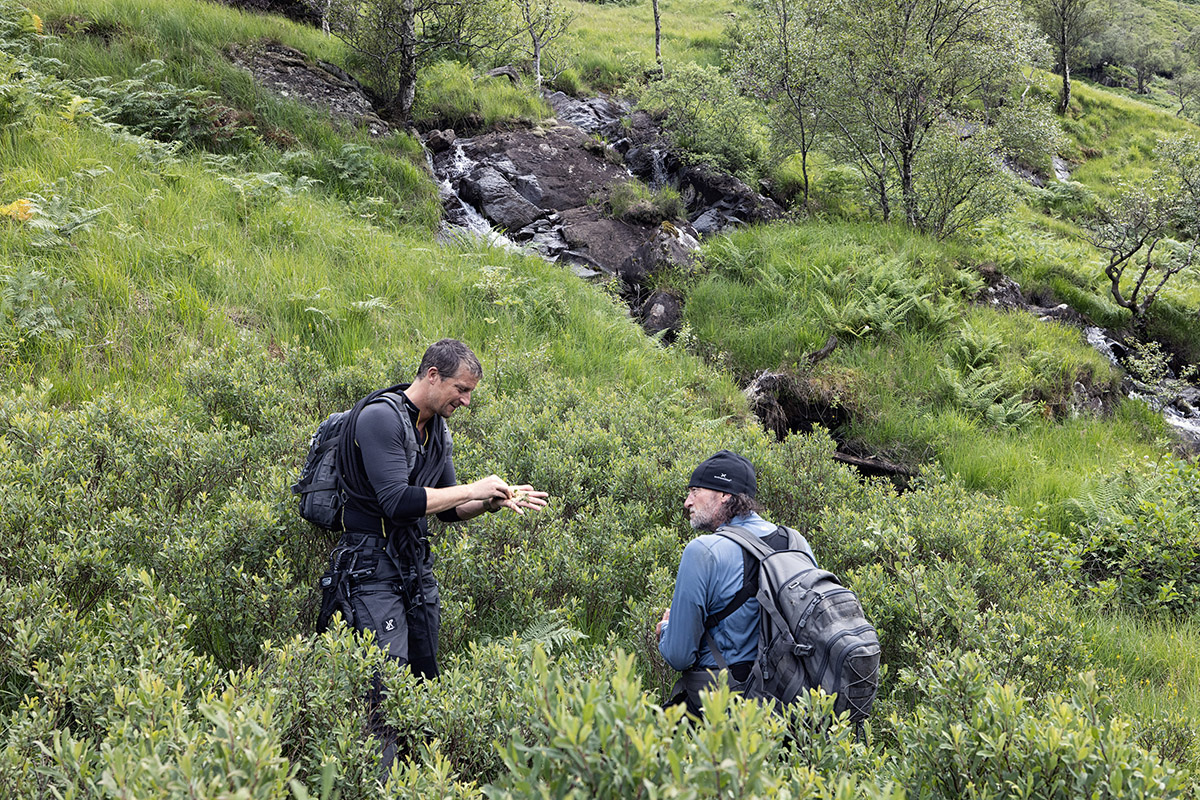
Troy wakes up ready to be tested on everything he learned the previous day, and Bear heads off and leaves him alone with limited gear to face the challenge alone.
Troy starts his solo journey on a small cliff with the South African descent technique and improves upon his performance from the prior day.
He then joins back up with Bear and they hit the river for a final push to what Bear notes is “the mother of all rappels”—a 150-foot cliff with the added difficulty of a 90-foot diagonal aerial detour to avoid rocks, trees, and a waterfall. Troy must conquer it entirely alone without communication from anyone.
Reminding himself to be confident, Troy goes over the edge, maintaining the wide-legged stance and steady brake hand Bear taught him. At one point during the descent, he stalls on a ledge—but there’s no turning back for the visibly nervous novice rappeler.
Troy manages to overcome his fear, pushes forward, and is visibly relieved when he makes it to the bottom and meets up again with Bear. “Good job, well done!” Bear congratulates him. “That was not easy.”
“When I got about a quarter of the way down, I realized that this was different, and I had to figure out what to do,” Troy recalls. “I knew that I really needed to have patience [. . .] It’s a good way to confront your fears and overcome them through patience. And look at this view, man, it was worth it.”
“I expected fear, but I’m so used to overcoming my fear,” Troy adds after completing his challenge. “It’s the only way to grow as a person.”


